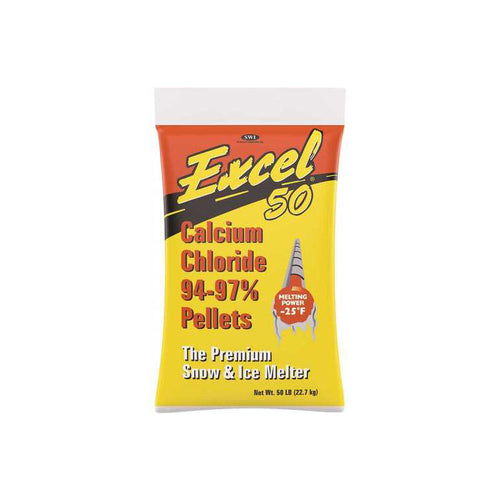Why You Need Snow and Ice Melt Products
That first winter snowfall may seem lovely, but icy patches under fresh powder can send someone crashing. Without proper cleanup, frozen surfaces become accident zones. Children and the elderly are especially vulnerable to icy falls, which cause thousands of hospital injuries yearly.
Snow and ice melt products dissolve and prevent refreezing. Excellent ice melt quickly creates a brine solution that breaks the snow-pavement bond when it touches frozen surfaces, providing long-term protection even in sub-freezing temperatures.
Untreated walkways are dangerous and create liability risks for businesses. One slip-and-fall lawsuit can damage your reputation. Ice can also block vital paths, delaying mail delivery, car access, and even emergency services.
The best snow and ice melt methods go beyond shoveling or scraping. They penetrate ice layers, forming channels that accelerate downward melting. This makes clearing easier, especially in hard-to-reach areas where shovels struggle.
How to Choose the Best Snow and Ice Melt for Your Needs
Understanding Your Winter Battlefield
Not all surfaces respond the same way to treatment. Concrete, asphalt, metal, and wood each interact differently with various ice melt formulations. Some low-quality products corrode metal or damage concrete through freeze-thaw cycles. Always choose based on the surfaces you'll be treating.
Temperature Matters
The best products clearly state their effective temperature range. Calcium chloride works down to -25°F but costs more than sodium chloride. Magnesium chloride is less corrosive and effective to -10°F, making it ideal for extreme cold snaps.
Protecting What You Love
Do you have pets, children, or valuable landscaping? These factors should guide your choice. Safe Paw ice melt is a non-salt option that won’t irritate paws or cause digestive issues if consumed. Eco-friendly products also reduce damage to plants and waterways.
Form Follows Function
Granular products spread easily and provide traction, while liquid ice melt works faster on contact and is excellent for pre-treatment. Premium blends may combine both—colored granules show where you've treated, while polymers help the product stick to vertical surfaces.
Consider storage as well: some products clump in humidity, while others remain free-flowing for multiple seasons. The best investment isn’t always the cheapest—it’s the formula designed for your specific winter conditions.
How to Properly Apply Snow and Ice Melt for Best Results
Timing Is Everything
The biggest mistake is waiting until after snow accumulates. For best results, apply a thin layer before precipitation begins. Pre-treatment prevents ice from bonding to surfaces, which is much easier than breaking it later.
The Right Amount (Less Than You Think)
Over-application wastes product and may harm vegetation. Use 1–3 ounces per square yard. Spread evenly instead of piling, which doesn’t speed melting and can damage surfaces. Hand-held or push spreaders ensure consistent coverage.
Working With Mother Nature
Let the ice melt work before shoveling. After 15–30 minutes, remove the slush to prevent refreezing and extend effectiveness. Pet-safe melts often need this wait time to fully penetrate ice bonds.
Safety First
Wear waterproof boots with traction and protective gloves during application. Store unused product in sealed containers, away from children and animals, in a cool, dry place. Consider liquid melts for tough areas—they act faster and at lower temps. For heavy snow, remove as much as possible before applying, so the melt reaches the bottom layer where ice forms.
Proper application isn’t just about immediate results—it’s also about minimizing property damage throughout the winter season.
FAQ
What's the difference between various snow and ice melt products?
Different snow and ice melt products work at different temperature ranges and have varying levels of corrosiveness. Calcium chloride works down to -25°F but costs more, while magnesium chloride offers a good balance at -10°F with less surface damage.
When should I apply snow and ice melt for best results?
Apply a thin layer before precipitation begins for optimal results, as this prevents ice from bonding to surfaces. If treating existing ice, allow 15-30 minutes after application before shoveling to let the product penetrate and loosen ice bonds.
How much ice melt should I use per application?
Use about 1-3 ounces per square yard for standard conditions, spreading evenly rather than creating piles. Excessive application wastes product and can harm surrounding vegetation.
Is there a safe ice melt for concrete surfaces?
Yes, choosing the right ice melt for concrete is crucial to prevent freeze-thaw damage and cracking over time. Look for formulations specifically labeled as concrete-safe, with magnesium chloride being gentler than calcium chloride or rock salt.
Are snow and ice melt products safe for pets and children?
Many traditional ice melts can irritate paws or cause digestive issues if consumed by pets or children. Look for pet-safe formulations with non-salt structures, and always store products in sealed containers away from children and animals.
Can I use ice melt on all outdoor surfaces?
Different surfaces like concrete, asphalt, metal, and wood respond differently to various formulations. Always check product labels for surface compatibility, as some products can corrode metal fixtures or damage certain materials.
How should I store unused ice melt products?
Store in sealed containers in a cold, dry place to prevent clumping and maintain effectiveness. Keep products away from children and animals for safety, as some formulations may clump when exposed to humidity.







